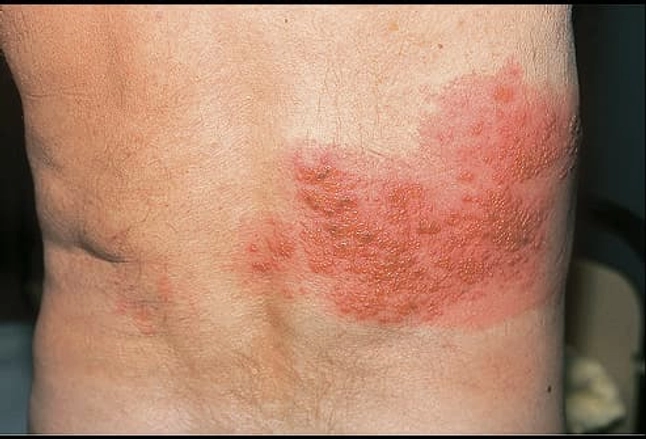Contact Lense Risks: If you wear reusable contact lenses, you should be careful. In fact, an infection has been identified in contact lens wearers in Britain, which can also cause blindness. This infection, called Acanthamoeba Keratitis, causes pain and irritation in the cornea.
Contact lenses have become a convenient and popular alternative to eyeglasses for millions of people worldwide. They offer a wider field of vision, eliminate the fogging associated with glasses, and are often favored for aesthetic reasons. However, while contact lenses can be a great solution for vision correction, they also come with certain risks, particularly for those who use reusable lenses. One of the most serious risks associated with reusable contact lenses is the development of eye infections, including a potentially sight-threatening condition known as Acanthamoeba Keratitis.
This article will provide a comprehensive overview of the risks associated with reusable contact lenses, focusing on Acanthamoeba Keratitis—a rare but severe infection that can cause significant eye pain, irritation, and even blindness. We will explore the causes, symptoms, prevention strategies, and the broader implications of contact lens-related infections to help users understand the importance of proper lens care and hygiene.
The Popularity of Contact Lenses
Contact lenses are a popular choice for vision correction, with millions of people worldwide opting for them over traditional eyeglasses. They offer several benefits, including:
- Improved Aesthetics: Many people prefer the appearance of contact lenses as they do not alter facial aesthetics as glasses do.
- Wider Field of Vision: Contact lenses sit directly on the eye, providing an unobstructed field of vision, which is particularly beneficial for sports and other activities.
- Convenience: For those with active lifestyles, contact lenses are often more convenient than glasses, especially in situations where glasses might get in the way, such as during physical activities.
However, despite these advantages, contact lenses require diligent care and maintenance to prevent complications, particularly infections.
Understanding Acanthamoeba Keratitis
Acanthamoeba Keratitis is a rare but serious eye infection that affects the cornea, the transparent outer covering of the eye. The infection is caused by a microscopic, free-living amoeba called Acanthamoeba, which is commonly found in water sources such as tap water, swimming pools, hot tubs, and lakes. While Acanthamoeba is usually harmless to humans, it can cause severe infections if it enters the eye, particularly in contact lens wearers.
The cornea plays a crucial role in focusing light into the eye and maintaining clear vision. When infected by Acanthamoeba, the cornea can become inflamed, leading to symptoms such as severe eye pain, redness, blurred vision, and light sensitivity. In severe cases, the infection can cause permanent damage to the cornea, leading to scarring and, in the worst cases, blindness.
How Does Acanthamoeba Keratitis Occur?
Acanthamoeba Keratitis primarily affects contact lens wearers, particularly those who use reusable lenses. The infection occurs when the Acanthamoeba organism enters the eye through contaminated water or improper contact lens hygiene practices. Common ways this infection can occur include:
- Contaminated Water: Using tap water or non-sterile water to clean contact lenses or contact lens cases can introduce Acanthamoeba into the eye. Swimming or showering while wearing contact lenses can also expose the lenses to contaminated water.
- Improper Lens Care: Failing to clean and disinfect contact lenses and lens cases properly can lead to the accumulation of harmful microorganisms, including Acanthamoeba.
- Wearing Lenses for Extended Periods: Over-wearing contact lenses, especially overnight, can reduce the eye’s ability to protect itself from infections, increasing the risk of Acanthamoeba Keratitis.
- Inadequate Hand Hygiene: Touching contact lenses with unclean hands can transfer Acanthamoeba and other pathogens directly to the lenses and, subsequently, to the eye.
Symptoms of Acanthamoeba Keratitis
Acanthamoeba Keratitis can be challenging to diagnose because its symptoms often resemble those of other common eye infections, such as bacterial or viral conjunctivitis. However, the following symptoms are commonly associated with Acanthamoeba Keratitis:
- Severe Eye Pain: The pain associated with Acanthamoeba Keratitis is often described as intense and out of proportion to the physical signs observed by an eye doctor.
- Redness: The affected eye may appear red and inflamed.
- Blurred Vision: As the infection progresses, it can cause blurred vision, making it difficult to see clearly.
- Light Sensitivity: Individuals with Acanthamoeba Keratitis often experience photophobia, or sensitivity to light, which can be very uncomfortable.
- Tearing and Discharge: Excessive tearing and discharge from the eye are also common symptoms.
If left untreated, the infection can lead to corneal ulceration, where the outer layer of the cornea breaks down, forming an open sore. This can result in significant scarring, and in severe cases, the only treatment option may be a corneal transplant to restore vision.
Diagnosis and Treatment of Acanthamoeba Keratitis
Diagnosing Acanthamoeba Keratitis can be challenging, as its symptoms are similar to those of other eye infections. An eye doctor (ophthalmologist) will typically conduct a thorough examination, which may include:
- Visual Acuity Test: To assess the impact of the infection on the individual’s vision.
- Slit-Lamp Examination: This involves using a special microscope with a bright light to examine the cornea for signs of infection and damage.
- Corneal Scraping: In some cases, the doctor may take a small sample from the cornea for laboratory analysis to identify the presence of Acanthamoeba.
Treatment for Acanthamoeba Keratitis is often prolonged and can be complex. It typically involves the use of topical antiseptic eye drops, which may need to be applied frequently over several months. In more severe cases, oral antifungal medications may be prescribed. Treatment may also involve pain management strategies to alleviate the discomfort associated with the infection.
In cases where the infection has caused significant damage to the cornea, resulting in scarring or vision loss, a corneal transplant may be necessary. This surgical procedure involves replacing the damaged cornea with healthy tissue from a donor.
Prevention Strategies: Protecting Your Eyes from Infection
The best way to protect your eyes from Acanthamoeba Keratitis and other contact lens-related infections is to practice proper lens hygiene and take preventive measures seriously. Here are some key strategies to reduce the risk:
- Use Sterile Solutions: Always use fresh, sterile contact lens solutions to clean and store your lenses. Avoid using tap water, homemade solutions, or saliva to clean your lenses or lens case.
- Clean and Replace Lens Cases Regularly: Contact lens cases should be cleaned with sterile solution and allowed to air dry after each use. Replace your lens case every three months to prevent contamination.
- Avoid Water Contact: Remove your contact lenses before swimming, showering, or using a hot tub to prevent exposure to potentially contaminated water. If you do come into contact with water while wearing lenses, use sterile saline to rinse your eyes and lenses immediately afterward.
- Follow Wearing Schedules: Adhere to the recommended wearing schedule for your contact lenses. Do not wear them longer than prescribed, and avoid wearing them overnight unless they are specifically designed for extended wear.
- Practice Good Hand Hygiene: Always wash your hands thoroughly with soap and water before handling your contact lenses. Dry your hands with a clean, lint-free towel before touching your lenses.
- Regular Eye Exams: Visit your eye care professional regularly for eye exams to monitor the health of your eyes and ensure that your lenses are fitting properly.
The Broader Implications of Contact Lens-Related Infections
The risks associated with contact lens use, particularly the risk of infections like Acanthamoeba Keratitis, highlight the need for increased awareness and education among contact lens wearers. While contact lenses offer many benefits, they also require a commitment to proper care and hygiene to prevent complications.
Public Health Awareness: Eye care professionals and public health organizations play a crucial role in raising awareness about the risks of contact lens-related infections. Educational campaigns that emphasize the importance of proper lens care, hygiene practices, and the dangers of using non-sterile solutions can help reduce the incidence of infections like Acanthamoeba Keratitis.
Advancements in Contact Lens Technology: The development of new contact lens materials and technologies may also contribute to reducing the risk of infections. Innovations such as lenses with antimicrobial properties or lenses designed for shorter wear times could help minimize the chances of contamination and infection.
The Role of Contact Lens Manufacturers: Contact lens manufacturers have a responsibility to ensure that their products are safe for use and that they provide clear instructions on proper care and usage. They should also invest in research to develop safer lenses and more effective cleaning solutions.
The Importance of Patient Compliance: Ultimately, the responsibility for preventing contact lens-related infections lies with the user. Patient compliance with hygiene practices and lens care instructions is critical in minimizing the risk of infection. Users should be diligent about following the guidelines provided by their eye care professional and should seek medical attention at the first sign of eye discomfort or infection.
Contact lenses are a convenient and popular option for vision correction, but they come with certain risks, particularly when proper care and hygiene are not followed. Acanthamoeba Keratitis is a rare but serious infection that can lead to significant eye pain, vision loss, and even blindness if not treated promptly. The risks associated with this infection underscore the importance of practicing good contact lens hygiene, using sterile solutions, and avoiding contact with contaminated water.
By understanding the dangers of contact lens-related infections and taking preventive measures, contact lens wearers can protect their eyes and enjoy the benefits of lenses without compromising their vision. Regular eye exams, adherence to wearing schedules, and proper lens care are essential steps in ensuring that contact lenses remain a safe and effective option for vision correction.














